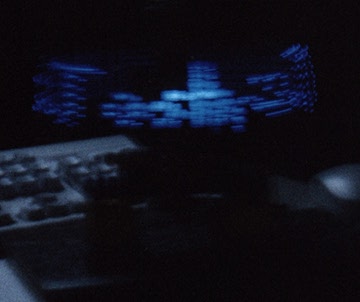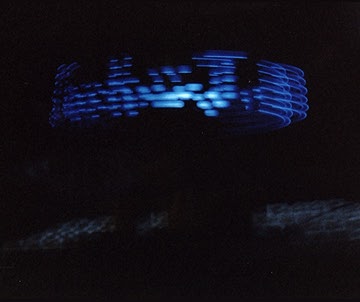
By Josh Wardell
Junior Design Project April 1999
Conclusion

By Josh Wardell
Junior Design Project April 1999
Conclusion
In order to hand this complexity I originally used the PIC 17C44 microprocessor/microcontroller (pictured a few pages above), one of their top-of-the-line chips that had 33 I/O lines, 8kB of EPROM (compared to 1kB in the 16C84), and triple the RAM (about 300 bytes) among other improvements. Several days worth of work were lost because of problems with the chip, which to put simply, would unexplainably jump around in the code or just plain not work even if it simulated without a hitch on the computer. Oh well, $25 down the drain.
Luckily I had on-hand the 16C84, which is more mid to low-end of the PIC line. It has much more support online, however, as there were several web pages for this chip (this first was never mentioned except on Microchip's site) and several hobbyists who lived by it. The assembly and instruction set was similar so it was not hard to port my code over. The downgrade took away any hope of attaching a keyboard (which would be hard to use anyway, as it would be spinning).
The largest factor, though, was time. Huge amounts of time were lost waiting for parts, dealing with problems, and in general moving anywhere but forward. I may have been able to still allowed a few different messages to be stored in the chip and the user selecting which one by pressing a button, but this would require a re-design of the board, not to mention re-assembly, and who knows what other problems would come along. The end of the semester was too close to take the chance of sabotaging the whole project.
In displaying the project, I found that it was hard to see in well-lit rooms. This may be due to the relatively dim blue LEDs. I placed it inside a black-painted box, which worked just fine. But it is really a site to see with the lights off!
I loved this project. I learned I can take something from my imagination and implement it in the physical work using digital components. I love the concept that I can do almost anything with a microcontroller at the heart of it. This project really inspired me, and made me very happy that I chose computer engineering; I wouldn't mind working with thinks like this for my career. I like the programming, but it is the satisfaction that I can implement something physical that I enjoy. I have always been a hands-on person and love working with electronics and mechanical things instead of just programs that exist in a virtual world on a computer, this project showed that I can merge these two and get a successful output. I obtained the award for best implementation at the ECS Open House, and am very happy to receive this; it is a nice addition to the satisfaction of seeing my project work. I only wish I had the time to make several more projects similar to this one, as the possibilities are endless.
Below are pictures of my project, displaying "Josh : )". Please realize that the message is aligned much more, I just couldn't hold the camera still.


Top - Introduction - Construction - Schematics - Source
Home - About - Email